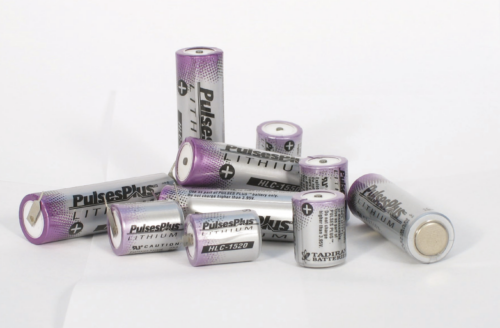Ultra-long-life batteries can power IIoT-connected devices up to 40 years.
At the core of the industrial internet of things (IIoT) are remote wireless devices being deployed at remote sites and in extreme environments. In these situations, extended battery life is essential to achieving an acceptable return on investment (ROI). These applications include AMR/AMI metering to M2M, SCADA, tank-level monitoring, asset tracking, environmental sensors, and more.
Extended battery life is critical wherever battery replacement is prohibitively expensive or impossible. To accomplish this, design engineers must employ a variety of techniques: with the device predominantly operating in a “standby” state that draws nominal current, utilizing some type of low-power communications protocol (e.g., WirelessHART, ZigBee, LoRA) coupled with low-power chip sets and proprietary techniques to minimize energy consumption during “active” mode and—most importantly—specifying a battery with a very low annual self-discharge rate.
The vast majority of low-power devices draw average current measurable in micro-amps with periodic pulses in the multi-amp range. These devices are predominantly powered by bobbin-type lithium thionyl chloride (LiSOCl2) chemistry, which offers unique performance characteristics, including extremely high capacity and energy density (supporting product miniaturization); an extended temperature range of –80 to +125°C (ideal for harsh environments), and an extremely low annual self-discharge rate (enabling up to 40-year battery life).
Exceptionally low self-discharge is achieved by harnessing the passivation effect, which occurs when a thin film of LiCl surrounds the anode to reduce the chemical reactions that cause self-discharge. Each time the battery starts to draw continuous current the passivation layer begins to dissipate, which is a continually recurring process.
The method by which a battery is constructed affects its ability to harness the passivation effect. For example, a superior quality bobbin-type LiSOCl2 cell can retain roughly 70% of its original capacity after 40 years. By contrast, a lower quality cell has a self-discharge rate of up to 3% per year, losing 30% of its nominal capacity every 10 years, making 40-year battery life unachievable.
Extended battery life is necessary wherever battery failure is highly problematic. A prime example is AMR/AMI utility metering, where large-scale battery failures can compromise billing systems, disable remote shut-off capabilities, and overwhelm field service crews.
Two-way wireless communications demand high pulses
Increasingly, IIoT-connected devices require periodic high pulses to power two-way wireless communications. Standard bobbin-type LiSOCl2 batteries serve as the ideal foundation by delivering exceptionally low self-discharge. However, these standard cells cannot generate the required high pulses due to their low rate design. This challenge can be easily addressed with the addition of a patented hybrid layer capacitor (HLC). This hybrid approach uses the standard LiSOCl2 cell to deliver low-level background current while the HLC generates the high pulses required to power wireless data communications. The patented HLC also features a unique end-of-life voltage plateau that can be used to generate low-battery status alerts that permit more pro-active maintenance.
High self-discharge can take years to become apparent, so thorough due diligence is required when comparing batteries. Start by demanding long-term test results, in-field data involving comparable devices with equivalent energy needs and environmental conditions, and multiple customer references.
Paying a little extra for an ultra-long-life lithium battery generally pays off in the long run by increasing your lifetime ROI while improving product reliability and data integrity.

